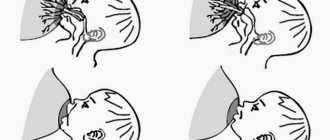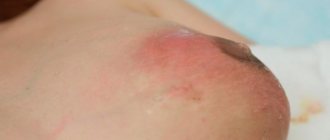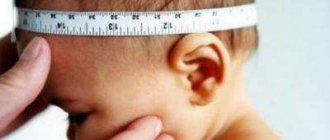For many mothers and their children, weaning off breastfeeding occurs naturally, without causing any difficulties - the child begins to be more interested in and eat food taken by other people. However, some babies simply refuse to wean, and many mothers can become frustrated, tired, and have only one problem on their mind: how to wean their baby off breastfeeding. When you stop breastfeeding, the thread between you and your baby breaks. Therefore, during this period, pay as much attention to the child as possible and give all the accumulated warmth and care.
What does every mother need to know about lactation?
Doctors distinguish three stages of lactation:
1. The formation stage begins several months before the baby is born and ends several months after the baby is born. The formation of lactation means that your hormonal system is rebuilt, preparing the mammary gland to produce milk, and lasts until it is adapted to the needs of the baby.
This stage may be accompanied by unpleasant symptoms :
- Periodic breast swelling;
- Painful sensations in the chest.
The main thing for mom is not to be afraid of this. Very often, due to such symptoms, a woman refuses breastfeeding for one reason or another, when in fact this can be completely avoided. But if anxiety does not leave you, consult with a knowledgeable and competent specialist.
2. The second stage is the stage of mature lactation , when adaptation has already passed and the baby’s needs for milk are fully satisfied. During this period, milk is produced exactly as much as the baby needs, and all unpleasant symptoms, as a rule, disappear.
3. The third stage of lactation involution occurs when the baby turns 1.5 - 2 years . At this time, breast milk becomes more similar in composition to colostrum: it contains antibodies, hormones and immunoglobulin. This composition prepares the baby’s immune system to function independently, without the support of mother’s milk.
Signs of the last stage of lactation , as a rule, are as follows:
- Duration of lactation: the involution stage cannot occur before the child is 1.3 months old. Most often, involution occurs when the baby is 1.5 - 2 years old. The only exception is the situation when the mother is expecting her second baby. In this case, the last stage of lactation occurs by the fifth month of pregnancy.
- Increased sucking activity of the baby: this is explained by the fact that the mother’s milk is becoming less and less, and the baby’s need for the amount of food taken is increasing. By active sucking and frequent attachments, the baby intuitively tries to increase the mother’s milk production.
- Physical condition of the mother after feeding: if, after the baby has eaten, the mother experiences fatigue or drowsiness, or feels pain in the chest or sore nipples, the mother experiences dizziness or headaches - this may also be a sign that the last stage of lactation has arrived .
You can understand whether you have really made the transition to the third stage of lactation by conducting an experiment : try leaving the baby with one of your relatives for a day and observe: if during this time you do not have painful sensations in your chest from being filled with milk, you can start Gradually wean your baby off breastfeeding . If in less than 12 hours the filling is very strong, it is not worth interrupting lactation yet .
Advice from experienced mothers
Women recommend weaning a child at 10 months; this is the most optimal and least traumatic age for a child. It is enough to put the baby next to you to sleep; during feeding you need to have a pacifier nearby. When taking medications to stop lactation, the baby himself observes that his usual milk is absent, and after getting used to it, he calmly switches to the pacifier. According to many, weaning at 10 months is the best option when everything goes painlessly.
As a rule, at this age the baby does not experience much stress when losing his traditional diet. The same cannot be said about the later period. Please note that after the recommended period of time has passed, “tantrums” will become a natural requirement of the mother’s breast. This creates a certain discomfort for mother and child.
How to painlessly wean a child from breastfeeding?
The site Colady.ru warns: self-medication can harm your health and the health of your baby! All tips presented are for informational purposes only, but they should only be used as prescribed by a doctor!
But now you have weighed all the circumstances and firmly decided to stop breastfeeding your baby. How can you make this period as painless and gentle as possible for your child?
There are several methods recommended by pediatricians and breastfeeding specialists.
Method number 1: soft weaning
The point of this method is to gradually wean the baby from breastfeeding.
How to prepare your baby for weaning:
- Explain to him that the milk will soon run out. Such conversations with your baby should begin in advance, before you start weaning him from the breast.
The weaning itself is best carried out in several stages:
- First, remove all intermediate feedings , leaving breastfeeding only in the morning, afternoon, evening, and also at night.
- When the baby wants to “attach” to the breast at an “inopportune” time, turn his desire into a game . This will not only distract the baby, but will also show him that you can communicate with your mother in a different way, no worse, and in many ways even better and more interesting.
- After some time (depending on how the child experiences the first stage), daytime feedings are removed .
- As a rule, daytime feeding is a way to put the baby to sleep. Now the mother will have to cope in other ways: reading or telling fairy tales, singing songs, rocking the baby in her arms or putting her to sleep on the street or on the balcony. True, the last method is not suitable for everyone, but if possible, it’s a very good option.
- Eliminate morning feedings. The child experiences this stage almost painlessly - the mother does not have any difficulties in switching the baby’s attention to something more interesting.
- Remove evening feedings before bedtime. This stage is the penultimate and very difficult: the child must learn to fall asleep without the breast. Mom will have to show all her ingenuity to distract the baby and persuade him to fall asleep.
- The final stage of weaning from breastfeeding is to eliminate night feedings . It's rare that a baby doesn't wake up at night. The best thing is if during this period the child sleeps with his mother (if you have not practiced co-sleeping).
Sometimes it makes sense to combine the last two stages - it all depends on the baby.
A few tips to help you:
- In order to gently wean your baby off breastfeeding, try to ensure that each stage lasts at least 2-3 weeks. And even if you have a situation where urgent weaning is necessary, it is better if you move to the next stage no earlier than in 2-3 days.
- But the most important thing is the mother’s firm decision to stop breastfeeding. This will help you cope with any difficulties.
What to do to reduce breastfeeding
If you encounter difficulties in weaning your baby, you should use tips that have helped even in the most difficult cases:
- Set limits on breastfeeding: shorten intervals and frequency. If your baby requires more milk than you planned, try to give him a substitute, for example, fresh goat's or cow's milk. It also has a protective function on the body. But goat is better, because... Its composition is closest to that of mother's milk.
- Keep in mind that when weaning a child, he experiences psychological discomfort from a decrease in the amount of intimacy with his mother. This can be compensated for by caresses, kiss and hug your baby more often at this moment.
- If a child insistently demands the breast and even makes scenes and tantrums, you need to try to convince him with psychological techniques. For example, use effective arguments that he is already very big and can safely drink from a cup. At the same time, we recommend giving your baby a healing milkshake to wean him off the taste of mother’s milk.
- Some people advise smearing the nipples with brilliant green and showing the baby how bad it is and how not to take the mother’s breast. It’s your will, but you should understand that with such a seemingly harmless step you are also creating self-disgust in the baby, which you shouldn’t do and break the mental connection between mother and child.
Method number 2: abrupt weaning
It consists of immediately transferring the child from breastfeeding to traditional nutrition.
Usually recommended:
- Apply mustard or something bitter to the breast so that the baby himself refuses it. Sometimes mothers are advised to lubricate the nipples with brilliant green.
- Mom should go away for a few days , or better yet, a week. This method, although effective, will be very stressful for the baby: after all, he will immediately lose both his mother, the closest and most necessary person, and the breast, the most reliable sedative.
- Situations are different, sometimes the mother is faced with the need to complete breastfeeding, and does not have time for gentle weaning .
And no matter what method you choose, the main thing is to firmly decide to stop breastfeeding and be confident in yourself: after all, it is you, and not one of the outside advisers, who knows your baby best.
What do experts advise?
The site Colady.ru warns: self-medication can harm your health and the health of your baby! All tips presented are for informational purposes only, but they should only be used as prescribed by a doctor!
Experts also advise paying attention to two important points:
- You cannot stop feeding at the first signs of involution: this will damage the child’s immunity;
- It is not advisable to abruptly wean a child from breastfeeding.
Why do you need to know about the stages of lactation? For several very important reasons:
- First of all, in order to painlessly wean the baby from the breast, no matter at what stage it is necessary to do this;
- To avoid unpleasant sensations during the period of weaning from breastfeeding for the mother herself
- So that the mother is ready, first of all, psychologically (which is an important factor) to wean the baby from breastfeeding.
It is undesirable to wean your baby from the breast in early spring - during the period of ARVI and influenza, mother's milk is the best prevention and strengthens the baby's immunity. Hot summers are also not suitable for stopping breastfeeding - high air temperatures contribute to the occurrence of intestinal infections.
Teething. During this period, the baby’s immunity is weakened, and the baby’s mother’s support is simply necessary. It is also important that during teething the child experiences discomfort and anxiety. Mom's breasts are the best way to calm down.
If less than a month has passed since the child’s illness, it is better to wait until weaning from breastfeeding.
Stressful situation associated with the mother going to work, the baby starting to visit the nursery, moving or the arrival of a new family member. Completing feeding in this situation will be unnecessary stress for the child.
The emotional state of the baby. An unstable condition will only worsen, the child may only get worse, it is better to wait until a more appropriate moment comes to start weaning from breastfeeding.
When to start weaning?
You choose the time for weaning yourself, whenever you see fit, but at the same time you must focus on your feelings and the general condition of the baby. According to the American Academy of Pediatrics, the average age of weaning is 1 year. In addition, if you start weaning your baby very early, some difficulties may arise that later develop into a problem. Today the trend of breastfeeding up to 2 - 3 years is returning. Be sure, when you start weaning off breast milk, make sure that he is ready for this. Average statistical indications say that the baby’s need for sucking decreases from 9 months to 3.5 years, however, one should not forget that this is very individual. Russian doctors recommend stopping breastfeeding at 1.5-2 years. But you yourself are free to decide when to stop breastfeeding. Remember the main thing, do not pay attention to what relatives, friends and neighbors say - you yourself have the right to decide when your child is ready to part with the breast. If you feel that this time has come, then you should not delay.
Recommendations and reviews from mothers
Irina:
Girls, tell me: I just don’t know what to do! My daughter doesn’t want to give up breastfeeding. She smeared her breasts with brilliant green, but she still demands and drinks, only now it’s not “sisyu”, but “kaku”! I tried to spread it with mustard - such hysteria began... What else can I try?
Alice:
I weaned it off simply: I lubricated it with Levomekol ointment and gave it to my daughter. She said to me: “Ewwww!”, and I said: “Eat, little bunny.” That's all. No hysterics, no whims, no more demands.
Olga:
I didn’t even know what problems with weaning from breastfeeding were: my son just didn’t even remember about breastfeeding one day! And no troubles...
Natalia:
I gradually transferred my baby to supplementary feeding, and with each week the breast milk decreased. We transitioned smoothly within 2 months.
Rita:
I had to wean early. Therefore, at first I accustomed my daughter to a bottle with expressed milk, then she replaced one feeding with formula from a bottle. So we gradually moved on.
Inna:
We couldn't wean ourselves off night feeding. There is almost no milk, and my son is screaming and demanding. Replacing with juice, water, milk did not give anything, and we went the other way: I simply did not react to his cries and demands. It was very difficult, but after a week I came to terms with it.











